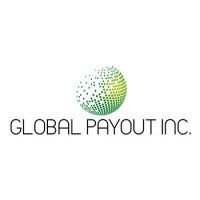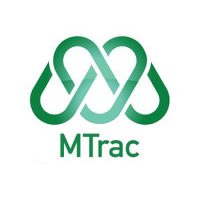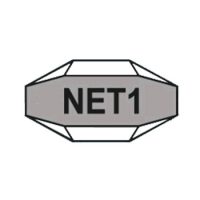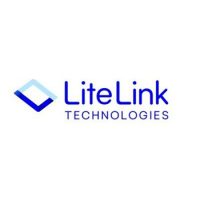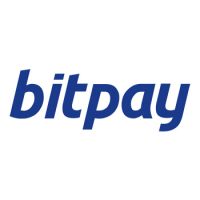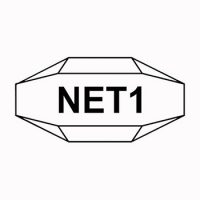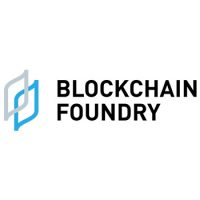Blockchain Press Releases
IDTechEx Discusses 4 Ways to Eliminate Rare Earths in EV Motors and One You Haven’t Heard

BOSTON, Aug. 14, 2023 /PRNewswire/ — The use of rare earths in various modern technology has drawn attention over the years. But with the rising demand for electric vehicles (EVs), the issue has been brought to the fore. 82% of the electric car market in 2022 was using electric motors based on rare earth permanent magnets. China largely controls the supply of rare earths, and this has led to significant price volatility in previous years, with a large spike in 2011/2012 and a big rise between 2021-2022. Crucially, in comparison to some other technologies, several methods can be used to eliminate the use of rare earths in electric motors, which will be outlined in this article along with the pros, cons, and adoption.
This article is based on IDTechEx’s latest “Electric Motors for Electric Vehicles 2024-2034” report that analyses different motor technologies for performance, materials, market adoption, and future potential.
To briefly describe the construction of an electric motor, a stationary part (stator) has coils of metal (typically copper) fed by an electric current to generate a magnetic field. This field will then turn the rotating part of the motor (rotor). In a rare earth permanent magnet (PM) motor, the magnets are located on the rotor.
1. The Induction Motor
In an induction motor (or asynchronous motor), the rotating magnet field produced by the stator induces currents on the rotor, which in turn produces a magnetic field that is attracted/repelled from the radial field of the stator windings. The induction motor uses copper or aluminum bars or windings on the rotor. These motors typically present good peak power and torque density over short periods but can prove challenging to thermally manage and typically have lower efficiency than PM options.
Induction motors have been common in the EV market, being the primary choice of Tesla until the release of the Model 3 (which adopted a PM design). In the car market, some proponents remain, such as Audi and Mercedes, but induction motors are now largely used as a secondary motor, used for acceleration boosts as they do not create drag when not in use, eliminating the need for a decoupler.
2. The Wound Rotor Motor
Also known as an externally excited synchronous motor (EESM), the wound rotor synchronous motor (WRSM) replaces the magnets on the rotor with coil windings that can be fed with a DC current to generate a magnetic field. This has the advantage of being able to control both the stator and rotor field. The downsides are the additional manufacturing steps required to add windings to the rotor and brushes are needed to transmit power to the rotor. These motors have historically also had poorer power and torque density, but modern versions are comparable with PM motors.
Renault was an early proponent of this technology in the Zoe, but now BMW and Nissan have adopted this design, and tier 1 MAHLE has presented a version with wireless power transfer to the rotor, eliminating the brushes.
3. The Switched Reluctance Motor
Switched reluctance motors (SRMs) are potentially the most simple to construct, with the rotor largely being constructed of steel. The steel of the rotor has low reluctance compared to the air around it, so magnetic flux preferentially travels through the steel while attempting to shorten its flux path, rotating the rotor. Despite their simplicity and reliability, SRMs have typically been plagued with poorer power and torque density with other issues, including torque ripple and acoustic noise.
While SRMs have largely been confined to more industrial or heavy-duty applications, significant efforts are going into their development for EVs. Companies like Turntide Technologies have added more rotor and stator poles and come up with more sophisticated control systems to overcome traditional issues. UK-based Advanced Electric Machines have developed a new type of motor with a segmented rotor that remains simple in construction but is said to eliminate the acoustic noise and torque ripple while improving power and torque density; this design is the center of a project alongside Bentley.
4. Alternative Magnetic Materials
While many OEMs have steadily reduced the rare earth content of their motors, Tesla gained much interest by saying that its next-generation drive system will be a PM motor without rare earths. There are several ongoing projects to develop rare earth free magnets that can compete on magnetic performance; these are at varying levels of commercialization.
The problem with alternative magnetic materials is that their magnetic performance is generally much worse. For example, some manufacturers that make rare earth and ferrite magnet motors show a reduction in power by 50-70% for ferrite version of the same size motor, meaning that to match performance, much more magnetic material and/or a much larger motor is required.
Proterial has developed magnets with magnetic properties that it states “deliver the world’s highest levels among ferrite magnets”. The motor design only requires 20% more magnetic material to keep the motor power density the same. Niron Magnetics are developing iron nitride magnets, and its next-generation versions are planned to compete with neodymium performance. PASSENGER is a European project developing strontium ferrite and manganese aluminum carbon alloys. While efforts are underway, materials with a truly comparable performance are still some ways into the future; however, with other changes to the motor design, they might not need to.
5. A High Speed Ferrite Motor with Further Optimizations
While the adoption of ferrite magnets would significantly reduce motor performance, optimizing many other motor features could minimize this impact. Australian technology company Ultimate Transmissions has submitted a patent for a ferrite motor design that it believes could be one route Tesla could take to eliminate rare earths in a PM motor.
The design uses much larger ferrite magnets and higher speeds (20,000rpm) to achieve comparable power to a similarly sized rare earth PM motor. One challenge comes from containing the magnets effectively in the rotor; a potential solution would be using a carbon fiber wrap on the rotor (a technology Tesla has already demonstrated in its Plaid vehicles). Another challenge is that the ferrite magnets would need to be heated for optimal operation, the opposite issue faced by neodymium magnets, but not unachievable.
It should be noted that this design is still in the simulation phase, and Tesla could well be taking a different approach, such as its own alternative magnetic materials. But in simulations, this approach has shown similar power, reduced costs, and reduced weight at the expense of slightly reduced torque and a longer stack.
IDTechEx predicts a significant rise in rare earth free motor technologies. Source: IDTechEx
Conclusions for the Future
There is an increasing focus, especially outside of China, on reducing the rare earth content of electric motors. There are several strategies, each with its own trade-offs and opportunities for motor manufacturers and material suppliers. IDTechEx is predicting that rare earth PM motors will remain the dominant technology, largely thanks to China’s dominance in the EV market and other mines starting to come online worldwide. However, it anticipates that rare earth free options, including those mentioned above, will account for nearly 30% of the market in 2034.
IDTechEx’s latest iteration of “Electric Motors for Electric Vehicles 2024-2034” takes a deep dive into motor technology, market adoption, material utilization, and market forecasts. It draws from a large database of vehicles and motors across vehicle segments, including cars, buses, trucks, vans, 2-wheelers, 3-wheeler, microcars, and aircraft.
To find out more about this report, including downloadable sample pages, please visit www.IDTechEx.com/motors.
About IDTechEx
IDTechEx guides your strategic business decisions through its Research, Subscription and Consultancy products, helping you profit from emerging technologies. For more information, contact [email protected] or visit www.IDTechEx.com.
Images download:
https://www.dropbox.com/scl/fo/o79c4qab9xwlg09bvukna/h?rlkey=zd6od1iud43cq7y1oxcusjsby&dl=0
Media Contact:
Lucy Rogers
Sales and Marketing Administrator
[email protected]
+44(0)1223 812300
Social Media Links:
Twitter: www.twitter.com/IDTechEx
LinkedIn: www.linkedin.com/company/IDTechEx
Photo – https://mma.prnewswire.com/media/2182369/IDTechEx.jpg
Logo – https://mma.prnewswire.com/media/478371/IDTechEx_Logo.jpg

![]() View original content:https://www.prnewswire.co.uk/news-releases/idtechex-discusses-4-ways-to-eliminate-rare-earths-in-ev-motors-and-one-you-havent-heard-301896708.html
View original content:https://www.prnewswire.co.uk/news-releases/idtechex-discusses-4-ways-to-eliminate-rare-earths-in-ev-motors-and-one-you-havent-heard-301896708.html

Blockchain
Ethereum ETFs Aren’t Blockchain But Is A Revolutionary Tech: Top 6 Amazing Reasons To Invest In Them
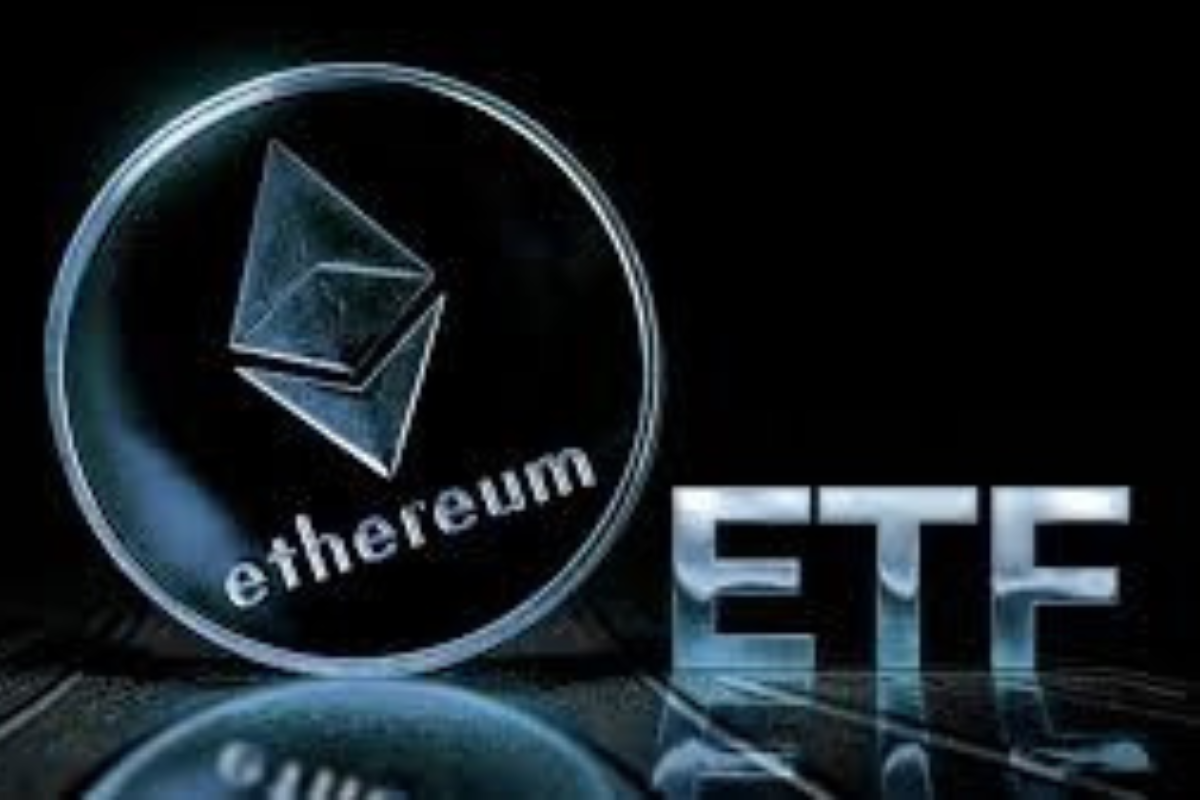
The financial landscape is rapidly evolving, with the integration of blockchain technology and cryptocurrencies becoming more prominent. Among these, Ethereum ETFs (Exchange-Traded Funds) have emerged as a significant investment vehicle, offering exposure to the Ethereum blockchain’s native cryptocurrency, Ether (ETH), without requiring direct ownership. However, it’s crucial to understand that Ethereum ETFs are distinct from the blockchain itself and serve different purposes in the investment world.
Understanding Ethereum and ETFs
Ethereum: A decentralized platform that enables the creation and execution of smart contracts and decentralized applications (dApps). It operates using its cryptocurrency, Ether (ETH), which fuels the network.
ETF (Exchange-Traded Fund): A type of investment fund that holds a collection of assets and is traded on stock exchanges. ETFs can include various asset classes, such as stocks, commodities, or bonds.
Ethereum ETFs: The Intersection of Traditional Finance and Cryptocurrency
An Ethereum ETF provides a way for investors to gain exposure to the price movements of Ether without directly purchasing the cryptocurrency. This is achieved through an ETF structure, where the fund holds assets linked to the value of Ether, and investors can buy shares of the ETF on traditional stock exchanges.
Key Features of Ethereum ETFs:
- Indirect Exposure: Investors gain exposure to Ether’s price changes without needing to manage or store the cryptocurrency themselves.
- Regulatory Compliance: Unlike the relatively unregulated cryptocurrency market, ETFs operate under the oversight of financial regulators, offering a layer of investor protection.
- Accessibility: Ethereum ETFs are available through traditional brokerage platforms, making them accessible to a broader range of investors.
Why Invest in an Ethereum ETF?
- Diversification: Including an Ethereum ETF in a portfolio can provide exposure to the cryptocurrency market, potentially enhancing diversification beyond traditional assets.
- Convenience and Familiarity: ETFs are a familiar investment product, simplifying the process of investing in cryptocurrencies.
- Professional Management: ETF managers handle the investment decisions, including the buying and selling of assets, which can be advantageous for those less familiar with the cryptocurrency space.
- Regulatory Oversight: ETFs are subject to regulatory scrutiny, potentially offering more safety and transparency compared to direct cryptocurrency investments.
- Potential for Growth: As the cryptocurrency market grows, ETFs linked to assets like Ether may benefit from rising prices.
Key Differences Between Ethereum and Ethereum ETFs
While both are related to the Ethereum blockchain, Ethereum itself and Ethereum ETFs represent different forms of investment:
- Ethereum (ETH):
- Direct ownership of the cryptocurrency.
- Full exposure to Ethereum’s features, including staking and network participation.
- Traded on cryptocurrency exchanges.
- Highly volatile and largely unregulated.
- Ethereum ETF:
- Indirect exposure through shares representing Ether’s value.
- Traded on traditional stock exchanges under regulatory oversight.
- Offers a more stable and familiar investment structure.
- Typically lower volatility compared to direct cryptocurrency ownership.
Future Considerations for Ethereum ETFs
The approval and launch of Ethereum ETFs mark a significant milestone in bringing cryptocurrencies closer to mainstream finance. They offer a convenient and regulated means for investors to gain exposure to the growing digital assets market. However, they also come with limitations, such as not allowing direct participation in the Ethereum ecosystem’s innovations, like dApps and smart contracts.
As the market evolves, we may see more sophisticated financial products that better capture the full potential of the Ethereum ecosystem. For now, Ethereum ETFs provide a balanced option for those interested in cryptocurrency exposure within the framework of traditional finance.
In conclusion, while Ethereum ETFs offer a gateway into the world of digital assets, they should be viewed as complementary to, rather than a replacement for, direct investment in the underlying blockchain technologies. Investors should carefully consider their investment goals, risk tolerance, and the unique attributes of both Ethereum and Ethereum ETFs when making investment decisions.
Source: blockchainmagazine.net
The post Ethereum ETFs Aren’t Blockchain But Is A Revolutionary Tech: Top 6 Amazing Reasons To Invest In Them appeared first on HIPTHER Alerts.
Blockchain
Nexo Reaffirms Commitment to Data Protection with SOC 3 and SOC 2 Compliance
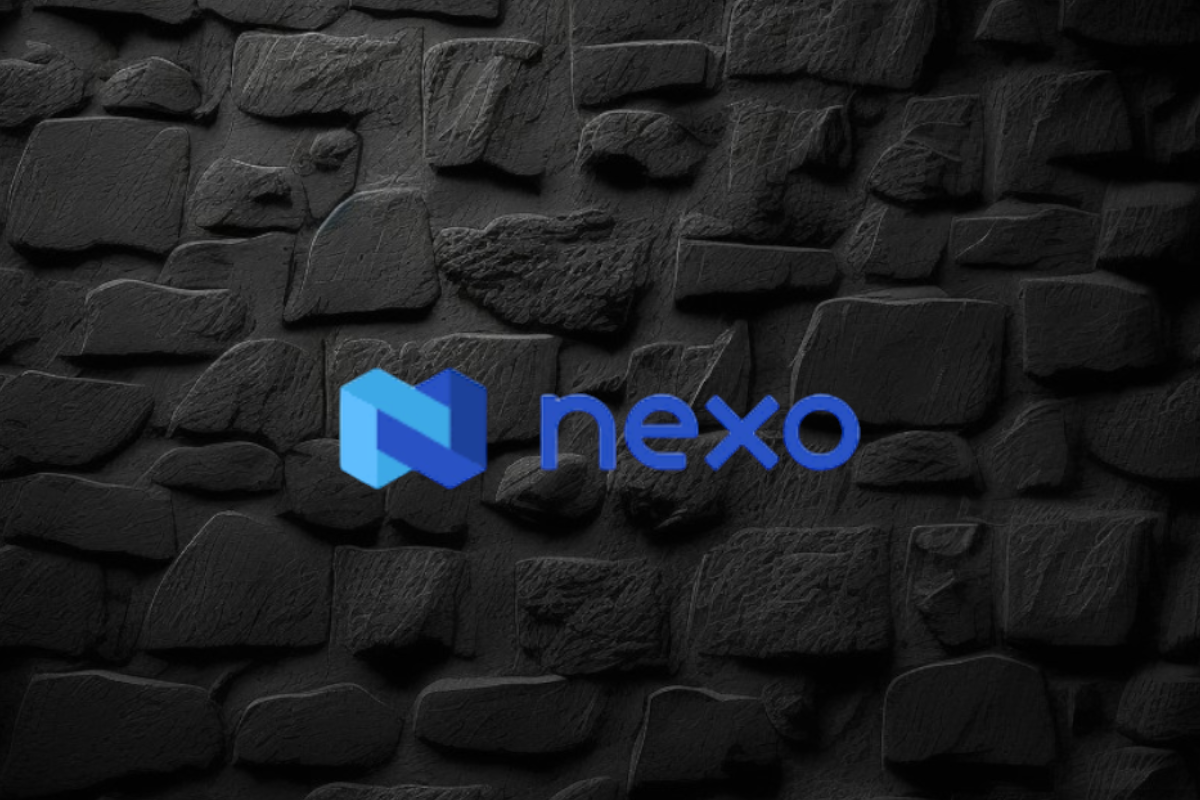
Nexo, a leading institution in the digital assets industry, has reinforced its commitment to data security by renewing its SOC 2 Type 2 audit and attaining a new SOC 3 Type 2 assessment without any exceptions. This rigorous audit process, conducted by A-LIGN, a respected independent auditor specializing in security compliance, confirms Nexo’s adherence to stringent Trust Service Criteria for Security and Confidentiality.
Key Achievements and Certifications
- SOC 2 and SOC 3 Compliance:
- SOC 2 Type 2: This audit evaluates and reports on the effectiveness of an organization’s controls over data security, particularly focusing on the confidentiality, integrity, and availability of systems and data.
- SOC 3 Type 2: This public-facing report provides a summary of SOC 2 findings, offering assurance to customers and stakeholders about the robustness of Nexo’s data security practices.
- Additional Trust Service Criteria:
- Nexo expanded the scope of these audits to include Confidentiality, showcasing a deep commitment to protecting user data.
- Security Certifications:
- The company also adheres to the CCSS Level 3 Cryptocurrency Security Standard, and holds ISO 27001, ISO 27017, and ISO 27018 certifications, awarded by RINA. These certifications are benchmarks for security management and data privacy.
- CSA STAR Level 1 Certification:
- This certification demonstrates Nexo’s adherence to best practices in cloud security, further solidifying its position as a trusted partner in the digital assets sector.
Impact on Customers and Industry Standards
Nexo’s rigorous approach to data protection and compliance sets a high standard in the digital assets industry. By achieving these certifications, Nexo provides its over 7 million users across more than 200 jurisdictions with confidence in the security of their data. These achievements not only emphasize the company’s dedication to maintaining top-tier security standards but also highlight its proactive stance in fostering trust and transparency in digital asset management.
Nexo’s Broader Mission
As a premier institution for digital assets, Nexo offers a comprehensive suite of services, including advanced trading solutions, liquidity aggregation, and tax-efficient credit lines backed by digital assets. Since its inception, the company has processed over $130 billion, showcasing its significant impact and reliability in the global market.
In summary, Nexo’s successful completion of SOC 2 and SOC 3 audits, along with its comprehensive suite of certifications, underscores its commitment to the highest standards of data security and operational integrity. This dedication positions Nexo as a leader in the digital assets space, offering unparalleled security and peace of mind to its users.
Source: blockchainreporter.net
The post Nexo Reaffirms Commitment to Data Protection with SOC 3 and SOC 2 Compliance appeared first on HIPTHER Alerts.
Blockchain
Marshall Becomes First US Senator to Walk from Controversial Crypto Bill He Co-Sponsored

Republican Senator Roger Marshall has withdrawn his support for the Digital Asset Anti-Money Laundering Act of 2023, a controversial bill he initially co-sponsored with Senator Elizabeth Warren and others. This bill, reintroduced in the Senate on July 27, 2023, aimed to bring the cryptocurrency industry into alignment with existing anti-money laundering (AML) and counter-terrorism financing (CTF) laws.
Key Provisions of the Bill
The legislation proposed stringent regulations on digital asset providers, including unhosted wallet providers, miners, and validators, by classifying them as financial institutions under the Bank Secrecy Act (BSA). It mandated these entities to adhere to BSA compliance requirements, which include extensive reporting and monitoring responsibilities. Additionally, the bill called for the Financial Crimes Enforcement Network (FinCEN) to establish regulations for reporting significant foreign digital asset holdings and to create compliance measures to address risks associated with anonymity-enhancing technologies.
Senator Marshall’s Shift
Marshall’s withdrawal from the bill comes as a surprise, particularly given his earlier criticisms of cryptocurrencies, which he has described as a “threat to national security.” This includes concerns over stablecoins like Tether potentially facilitating illegal activities and circumventing U.S. sanctions. Despite his earlier stance, Marshall’s departure from the legislation suggests a reconsideration of the bill’s implications or an alignment with broader political and industry perspectives on cryptocurrency regulation. His office has not provided a comment on the reasons for his withdrawal.
Political and Industry Reactions
The bill had garnered significant bipartisan support, with 18 co-sponsors, reflecting a broader concern in Congress over regulating the rapidly growing cryptocurrency market. However, it has also faced criticism for potentially imposing impractical compliance burdens that could stifle innovation and push crypto activities offshore. Critics argue that the bill’s stringent requirements could inadvertently drive users toward unregulated platforms, thereby undermining its intent to enhance security and regulatory oversight.
Broader Context
The withdrawal comes at a time when cryptocurrency regulation is a highly contentious issue in U.S. politics. Former President Donald Trump has promised to relax crypto regulations if elected, contrasting with the current administration’s more stringent stance. Under President Joe Biden, the Securities and Exchange Commission (SEC) and other regulatory bodies, led by figures like Gary Gensler, have taken a more rigorous approach to regulating the sector, which has drawn criticism for being overly restrictive.
Senator Marshall’s decision to step back from the Digital Asset Anti-Money Laundering Act reflects the complex and evolving nature of cryptocurrency regulation in the U.S. While the bill seeks to bring greater oversight and security to the crypto industry, it also raises concerns about regulatory overreach and its potential negative impact on innovation and privacy. As the debate continues, the U.S. legislative and regulatory landscape for cryptocurrencies remains in flux, balancing the need for security with the desire to foster technological innovation.
Source: decrypt.co
The post Marshall Becomes First US Senator to Walk from Controversial Crypto Bill He Co-Sponsored appeared first on HIPTHER Alerts.
-

 Blockchain4 days ago
Blockchain4 days agoBinance Cleared to Invest Customer Assets in US Treasury Bills: What It Means for Crypto and Dollar Dominance
-

 Blockchain4 days ago
Blockchain4 days agoDeep Custodian Limited Obtains Hong Kong TCSP License, Authorized to Provide Compliant Crypto Asset Custody Services
-

 Blockchain Press Releases2 days ago
Blockchain Press Releases2 days agoBybit Web3 Livestream Explores Cultural Meme Coins and Other Trends
-

 Blockchain2 days ago
Blockchain2 days agoBlockchain Intelligence Group adds additional modules and launches its Certified Cryptocurrency Investigator – Advanced Series
-

 Blockchain3 days ago
Blockchain3 days agoBitAngels Network Hosts Blockchain Pitch Competition in Nashville
-

 Blockchain Press Releases2 days ago
Blockchain Press Releases2 days agoBybit Surges to Second Place in Derivatives Market, Solidifying Position as Global Crypto Trading Leader
-

 Blockchain4 days ago
Blockchain4 days agoCoinW Continues Expedition Trek And Double Down On Presence At ETH-Native Events
-

 Blockchain5 days ago
Blockchain5 days agoWOO X and OpenTrade Enhance RWA Earn Vaults with Flexible Withdrawals






